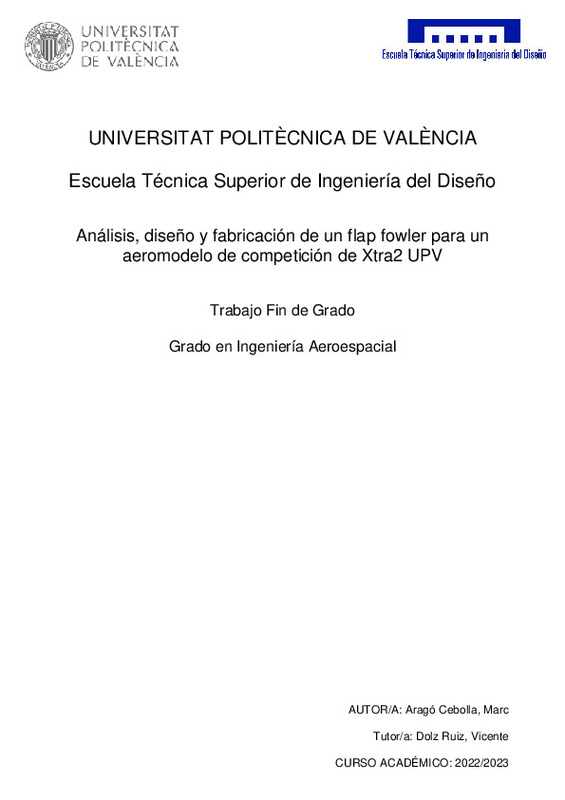JavaScript is disabled for your browser. Some features of this site may not work without it.
Buscar en RiuNet
Listar
Mi cuenta
Estadísticas
Ayuda RiuNet
Admin. UPV
Análisis, diseño y fabricación de un flap fowler para un aeromodelo de competición de Xtra2 UPV
Mostrar el registro completo del ítem
Aragó Cebolla, M. (2023). Análisis, diseño y fabricación de un flap fowler para un aeromodelo de competición de Xtra2 UPV. Universitat Politècnica de València. http://hdl.handle.net/10251/197174
Por favor, use este identificador para citar o enlazar este ítem: http://hdl.handle.net/10251/197174
Ficheros en el ítem
Metadatos del ítem
| Título: | Análisis, diseño y fabricación de un flap fowler para un aeromodelo de competición de Xtra2 UPV | |||
| Otro titulo: |
|
|||
| Autor: | Aragó Cebolla, Marc | |||
| Director(es): | ||||
| Entidad UPV: |
|
|||
| Fecha acto/lectura: |
|
|||
| Resumen: |
[ES] En este documento se estudia y diseña un flap tipo Fowler para su posterior fabricación e integración en el ala de una aeronave no tripulada de competición que cumple con la normativa de la Air Cargo Challenge 2022. ...[+]
[EN] This paper studies and designs a Fowler flap for its fabrication and integration into the wing of a competition unmanned aircraft according to the Air Cargo Challenge 2022 regulations. The contribution to the lift of ...[+]
|
|||
| Palabras clave: |
|
|||
| Derechos de uso: | Reserva de todos los derechos | |||
| Editorial: |
|
|||
| Titulación: |
|
|||
| Tipo: |
|
recommendations
Este ítem aparece en la(s) siguiente(s) colección(ones)
-
ETSID - Trabajos académicos [8898]
Escuela Técnica Superior de Ingeniería del Diseño







